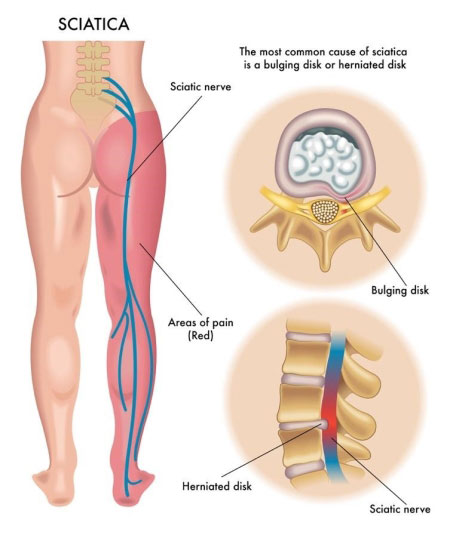Comprehensive Physiotherapy for Spondylosis, Disc Herniation, and Sciatica: A Path to Relief
Spondylosis, disc prolapse, and sciatica are common musculoskeletal conditions that can significantly impact an individual's quality of life. While these conditions can be challenging, physiotherapy offers a non-invasive and effective approach to managing symptoms, promoting healing, and restoring function. In this content, we will explore how physiotherapy plays a crucial role in the treatment of spondylosis, disc prolapse, and sciatica.

1.Understanding the Conditions:
1.Spondylosis:
- Spondylosis refers to the degeneration of the spine, often accompanied by the formation of bone spurs.
- Physiotherapy aims to alleviate pain, improve flexibility, and enhance posture through targeted exercises and manual techniques.
2.Disc Prolapse (Herniation):
- Disc prolapse occurs when the soft inner portion of a spinal disc protrudes through the tough outer layer, causing pain and potential nerve compression.
- Physiotherapy focuses on reducing inflammation, relieving pressure on nerves, and strengthening supporting muscles to prevent further episodes.
3.Sciatica:
- Sciatica results from the compression or irritation of the sciatic nerve, leading to pain, numbness, and tingling radiating down the leg.
- Physiotherapy interventions aim to address the underlying cause, relieve nerve compression, and improve overall function.
2.Physiotherapy Techniques and Modalities:
1.Exercise Programs:
- Tailored exercises to strengthen core muscles, improve flexibility, and stabilize the spine.
- Gradual progression to enhance endurance and prevent future injuries.
2.Manual Therapy:
- Hands-on techniques such as joint mobilization and manipulation to reduce pain and improve joint function.
3.Traction:
- Spinal traction to relieve pressure on discs and nerves, promoting decompression and pain relief.
4.Electrotherapy:
- Modalities like ultrasound and transcutaneous electrical nerve stimulation (TENS) to reduce inflammation and alleviate pain.
5.Postural Correction:
- Education on proper ergonomics and body mechanics to prevent strain on the spine and support long-term recovery.
6.Patient Education:
- Informing patients about their condition, teaching self-management strategies, and promoting lifestyle modifications for sustained well-being.
3.Benefits of Physiotherapy::
1.Pain Relief:
- Targeted interventions to reduce pain and discomfort associated with spondylosis, disc prolapse, and sciatica.
2.Improved Functionality:
- Restoration of normal movement patterns and improved functional abilities.
3.Prevention of Recurrence:
- Strategies to prevent future episodes and empower individuals to take control of their spinal health.
4.Enhanced Quality of Life:
- A comprehensive approach to promote overall well-being and an active lifestyle.
4.Conclusion:
Physiotherapy offers a holistic and patient-centered approach to managing spondylosis, disc prolapse, and sciatica. Through a combination of exercises, manual therapy, and education, physiotherapists play a crucial role in alleviating symptoms, improving function, and empowering individuals to lead a healthier, more active life. If you are experiencing symptoms of these conditions, consult with a qualified physiotherapist to develop a personalized treatment plan tailored to your specific needs.
